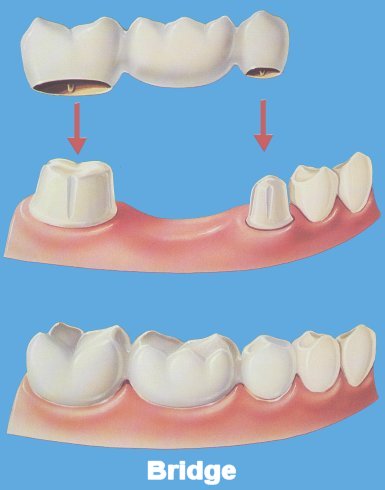What are Dental Bridges?
Dental bridges, or fixed partial dentures, have been around for more than 50 years. They are used to replace one or more missing teeth.
The best design for a bridge is to have two natural teeth or two dental implants at either end, then to have the missing teeth in between. In this design, it resembles a suspension bridge, similar to the Golden Gate Bridge, where the two towers support the portion between the towers.
In creating a bridge, the end or adjacent teeth are prepared for a crown. Crowns are made to fit over these teeth; however, the crowns are connected by one or more “solid crowns” which replace the missing teeth.
With this connection, conventional flossing cannot be done. As a result, a floss threader is needed to help thread the floss under the bridge prior to flossing the under-surface of the bridge and the supporting teeth.
The disadvantage of a bridge is that two teeth must be prepared for crowns. If these teeth needed crowns for protection anyway, then this disadvantage does not exist. However, if these two teeth are fairly pristine, then this disadvantage is in play.
In the event the end teeth are more pristine, a dental implant may be best to replace the missing tooth. In this way the adjacent teeth do not require preparation for crowns.
The advantage of a bridge is that the final result has similar strength and function as a natural tooth. There is very little that would feel “unnatural” about a bridge. The time it takes to accomplish a bridge is about three weeks.
Contact us today to discuss your options for a dental bridge or alternatives.


